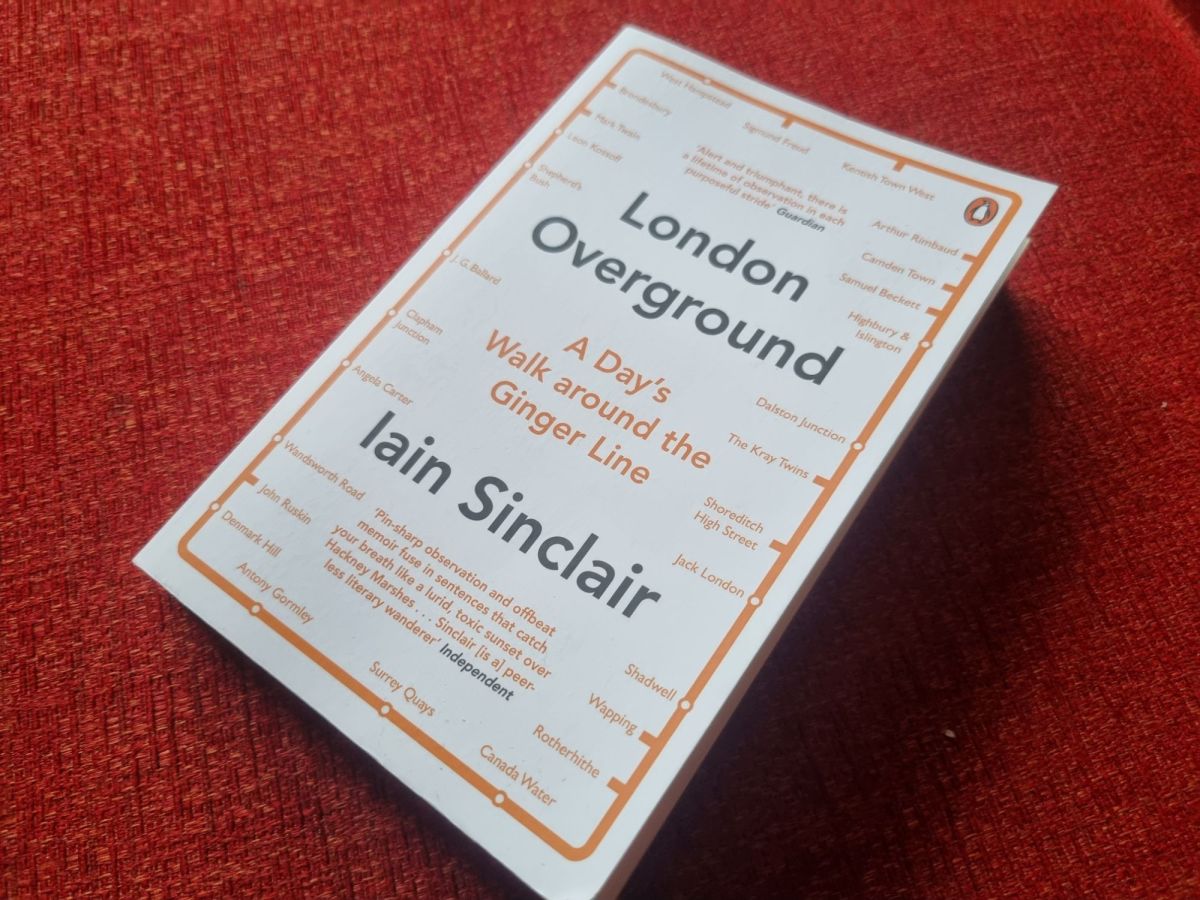Iain Sinclair’s London Overground opens with the image of a pigeon that has been splattered on a road, inviting other birds to pick at the carrion and causing further carnage. It ends with a picture of Andrew Kötting’s mutilated leg, pieced back together after surgery. It doesn’t get much less gory in between as Sinclair and Kötting follow the eruption of the London Overground around the landscape.
I am definitely an Iain Sinclair guy now, I can’t help it. I think London Orbital (which I reviewed here) is a masterpiece of monomania and a real non-fiction treat for any Ballard fans out there. I’ve also got a copy of Lights out for the Territory that I’m gonna start working my way through soon. I really dig his blend of fiction and non-fiction, of memory and the present, of travel writing and memoir. He’s got a really particular voice, and having since watched some of his work on film he seems to me to write how he speaks, which is an incredibly effective technique that is deceptively hard to do.
(It also means he speaks how he writes; in opaque prose poetry. I do not mean this as a criticism.)
If you’re reading this you know what psychogeography is. I tried to describe it to someone the other day and ended up saying something like, “it’s like walking around things you’re supposed to drive around and recording your impressions.” Yeah, I know it’s not quite it, but I was thinking of Sinclair’s two circuits around London as I spoke to them.
I knew going into this stuff that I was going to love it, but if you’re at all worried you might not, London Overground seems to me to be a good starting point. It encompasses a lot of his main concerns, it seems very typical of his style, and despite being much shorter than London Orbital it still describes a difficult odyssey.
A criticism I’ve seen of Sinclair is that he just likes to moan about things. I don’t disagree that he’s often depicting the more negative aspects of postmodern living, but I’ve met plenty of pub bores, and if any of them were half as erudite as Sinclair is I would have enjoyed my local pub a whole lot more. You often get the feeling he uses these walks as an excuse to talk about his reading, his favourite authors. If that is the case… it’s fine. He’s interested in fascinating writers. He’d met both J.G. Ballard and Angela Carter, and uses large parts of London Overground to talk about his memories of them, as well as the importance of their fiction, and the areas of London they wrote about. Memory presses upon these pages heavily, more so than before perhaps inevitably considering the nearly twenty years of living between Orbital and Overground.
Another figure that looms large is Sigmund Freud. Sinclair mostly seems concerned with his illness, the cancer that killed him. I didn’t think too much of it until I was flicking back through after I’d finished it to extract some stuff for my commonplace book and noticed the death and sickness that opened and closed the book. We’ve broached his grouchiness; I’ll give you one guess as to whether Sinclair things London is improving or getting worse, the walk in this book having taken place right in the post-Olympic hangover.
I mentioned in my review of London Orbital that he makes sure to include foils for himself. Andrew Kötting is his foil in this one, and what a foil he is. It’s like watching the Dionysian and the Appolonian perambulating around London. Sinclair is documenting relationships as much as he is places and feelings, and his works highlight his own friendships as much as they do anything else. It’s really… nice, I can’t think of another way to put it. If I had a friend who produced something like London Overground as a document of our friendship I’d count myself a loved and lucky man indeed.
London Overground is great, a nice little slice of what Sinclair does, a circumscribed document for a limited excursion. I’m still pretty early in my engagement with Sinclair’s work, but I can really imagine this functioning as an accessible entryway.








You must be logged in to post a comment.